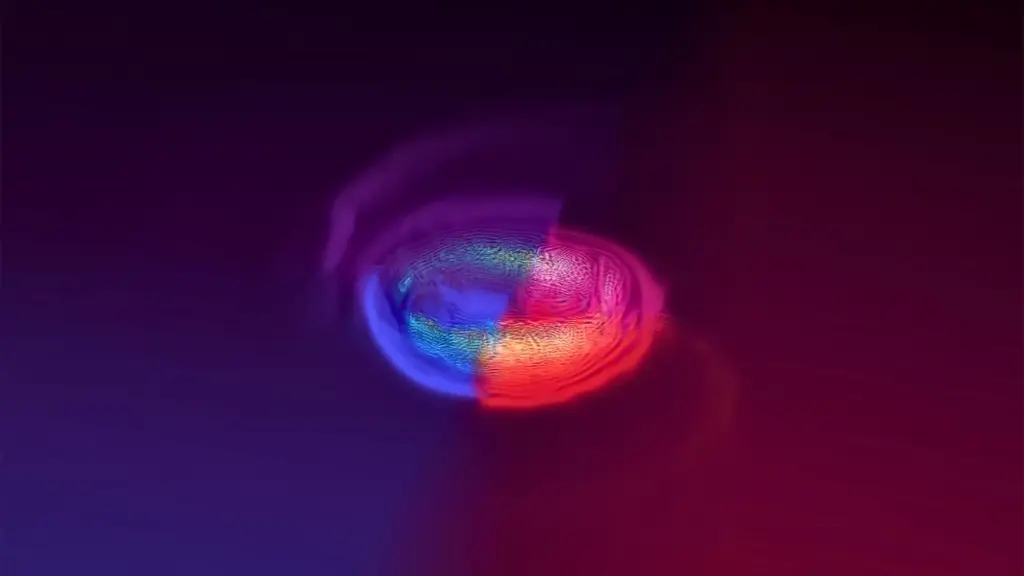
The groundbreaking research published in the journal Physical Review Letters unveils a hidden cosmic process that could explain the formation of precious metals like gold and platinum. This study is the first to simulate the transformation of neutrino “flavors” during neutron star mergers, a phenomenon that could significantly impact the creation of these elements.
Neutrinos, fundamental particles known for their weak interaction with other matter, exist in three flavors: electron, muon, and tau. Under specific conditions, such as those found inside a neutron star, neutrinos can theoretically change flavors, altering the types of particles they interact with. This discovery could provide insights into the cosmic origins of heavy metals.
Simulating Neutrino Transformations
Yi Qiu, a graduate student in physics at the Penn State Eberly College of Science and the study’s lead author, emphasized the novelty of their approach. “Previous simulations of binary neutron star mergers have not included the transformation of neutrino flavor,” Qiu stated. “This is partly due to the rapid timescale of the process and our limited understanding of the theoretical physics involved.”
The research team constructed a comprehensive computer simulation of a neutron star merger, integrating various physical processes such as gravity, general relativity, hydrodynamics, and neutrino mixing. They focused on the transformation of electron flavor neutrinos to muon flavor, deemed most relevant in this context. By modeling different scenarios, they observed how these transformations influenced the merger’s outcome.
Impact on Element Formation
The study revealed that neutrino transformations significantly affect the composition and structure of the merger remnant. During a collision, neutrons from a neutron star can be ejected and captured by other atoms, leading to the formation of heavier elements like gold, platinum, and rare earth elements, which are crucial for modern technology.
“A neutrino’s flavor changes how it interacts with other matter,” explained David Radice, Knerr Early Career Professor of Physics at Penn State. “The conversion of neutrino flavors can alter the availability of neutrons, directly impacting the creation of heavy metals and rare earth elements.”
This finding is pivotal, as it suggests that accounting for neutrino mixing could enhance element production by as much as a factor of 10, addressing lingering questions about the cosmic origins of these elements.
Detectable Emissions and Future Observations
Neutrino mixing also influences the emissions detectable from Earth, including gravitational waves and electromagnetic radiation like X-rays or gamma rays. Radice noted, “In our simulations, neutrino mixing impacted the electromagnetic emissions from neutron star mergers and possibly the gravitational waves as well.”
With advanced detectors like LIGO, Virgo, and KAGRA, along with future observatories such as the proposed Cosmic Explorer, astronomers are on the brink of detecting gravitational waves more frequently. Understanding these emissions will be crucial for interpreting future observations.
Challenges and Future Directions
The researchers compared modeling the mixing process to an inverted pendulum, where rapid changes eventually stabilize. However, much remains uncertain. “There’s still a lot we don’t know about the theoretical physics of these neutrino transformations,” Qiu remarked. “As theoretical particle physics advances, we can greatly improve our simulations.”
Now that the infrastructure for these complex simulations exists, other research groups are expected to utilize this technology to further explore neutrino mixing impacts. “Neutron star mergers function like cosmic laboratories, providing insights into extreme physics we can’t replicate safely on Earth,” Radice concluded.
This research, supported by the U.S. Department of Energy, the Sloan Foundation, and the U.S. National Science Foundation, included contributions from Maitraya Bhattacharyya and Sherwood Richers, highlighting the collaborative effort to unravel the mysteries of the universe.





